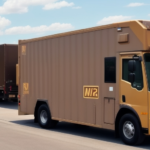Is Windows 7 Compatible with UPS WorldShip?
UPS WorldShip is an essential tool for businesses managing shipping operations, enabling automation of label creation, shipment tracking, and cost calculations. With the evolving landscape of operating systems, particularly the widespread adoption of Windows 10 and Windows 11, businesses still using Windows 7 may question the continued compatibility of UPS WorldShip with their systems.
The Importance of UPS WorldShip Compatibility
Ensuring compatibility between UPS WorldShip and your operating system is crucial for maintaining seamless shipping operations. UPS WorldShip supports businesses by providing standardized shipping procedures, allowing for efficient generation of shipping labels, tracking shipments, and calculating shipping charges. Incompatibility can lead to operational disruptions, reduced efficiency, and potential impacts on customer satisfaction.
Regular updates from UPS ensure that WorldShip remains compatible with the latest operating systems, making it imperative for businesses to keep both their software and hardware up to date. This proactive approach helps in maximizing the benefits of UPS WorldShip and avoiding any disruptions to daily operations.
Compatibility Requirements for UPS WorldShip on Windows 7
As of the latest updates, UPS WorldShip remains compatible with various Windows operating systems, including Windows 7. However, specific system requirements must be met to ensure optimal performance:
- Operating System: Windows 7 Professional, Ultimate, or Enterprise (32-bit or 64-bit)
- Browser: Internet Explorer 7.0 or later
- Processor: Pentium 4 or equivalent, 2 GHz or faster
- RAM: 2 GB or higher
- Disk Space: 1.5 GB available
Additionally, compatibility with third-party software should be verified, and network configurations such as firewall settings must allow UPS WorldShip to communicate effectively with UPS servers. Failure to meet these requirements can result in functionality issues or complete software failures.
How to Verify Compatibility of Windows 7 with UPS WorldShip
Before installing UPS WorldShip on a Windows 7 system, it's essential to perform a compatibility check to ensure smooth installation and operation. Follow these steps:
- Update Your System: Navigate to Windows Update through the Start menu, check for updates, and install any available patches or updates.
- Download UPS WorldShip: Visit the official UPS WorldShip website to download the latest version of the software.
- Install the Software: Run the downloaded installation file, following the on-screen prompts to complete the installation.
- Test Functionality: Launch UPS WorldShip and perform a test operation, such as creating a sample shipping label, to ensure the software operates correctly.
Common Compatibility Issues and Solutions
While UPS WorldShip is compatible with Windows 7, users may encounter several common issues:
- Installation Failures: Errors during installation can occur due to insufficient system permissions or conflicting software.
- Printer Configuration Problems: Difficulty in setting up printers within WorldShip can hinder label printing operations.
- Software Crashes or Freezes: Unexpected crashes can interrupt shipping tasks and lead to data loss.
- Database Corruption: Corrupt databases can disrupt shipment tracking and data management within WorldShip.
Most of these issues can be resolved through troubleshooting steps such as reinstalling the software, updating drivers, or consulting UPS WorldShip support resources.
Performance issues, such as slow operation, may be mitigated by upgrading hardware components, increasing system memory, or performing disk cleanup to free up resources.
Troubleshooting Compatibility Issues
If you encounter compatibility problems between Windows 7 and UPS WorldShip, consider the following troubleshooting tips:
- Update Windows: Ensure your Windows 7 system has all the latest updates installed via Windows Update FAQs.
- Reinstall UPS WorldShip: Uninstall the current version and perform a fresh installation of UPS WorldShip.
- Check Network Settings: Verify that your network is functioning correctly and that firewall settings permit UPS WorldShip to communicate with UPS servers.
- Verify Hardware Integrity: Ensure all hardware components, such as printers and network devices, are functioning properly.
Additionally, running UPS WorldShip in compatibility mode can resolve certain issues:
- Right-click the UPS WorldShip icon and select Properties.
- Navigate to the Compatibility tab.
- Select Windows 7 from the compatibility mode dropdown menu.
- Click Apply and then OK to save changes.
If problems persist, contacting UPS WorldShip customer support is recommended for further assistance.
Alternatives to UPS WorldShip for Windows 7 Users
If compatibility issues with Windows 7 cannot be resolved or if you are seeking alternative shipping solutions, consider the following options:
- ShipStation - A cloud-based shipping software that integrates with multiple carriers and offers features like batch label printing and order tracking.
- Stamps.com - A web-based shipping service that allows users to print USPS postage and labels directly from their computers.
- Endicia - Provides online postage services tailored for businesses with scalable solutions.
- Ordoro - An e-commerce order and shipping management system designed to streamline the shipping process.
These alternatives offer various features and integrations that may better suit specific business needs or provide improved compatibility with modern operating systems.
Upgrading to a Compatible Operating System
Windows 7 has reached its end of support, meaning it no longer receives security updates or patches from Microsoft. Running UPS WorldShip on an unsupported operating system can pose security risks and lead to functionality issues. Therefore, upgrading to a newer, supported operating system, such as Windows 10 or Windows 11, is highly recommended for enhanced security and compatibility.
Before upgrading, ensure that your hardware meets the requirements for the new operating system. Additionally, back up all important data to prevent loss during the upgrade process. Upgrading will not only ensure compatibility with UPS WorldShip but also provide access to the latest security features and performance improvements.
Best Practices for Long-Term Compatibility
To maintain long-term compatibility and ensure the smooth operation of UPS WorldShip, implement the following best practices:
- Regular Software Updates: Frequently check for and install updates for UPS WorldShip to benefit from the latest features and security patches.
- System Maintenance: Perform routine maintenance, such as disk cleanups and defragmentation, to maintain system performance.
- Database Backups: Regularly back up your UPS WorldShip database to prevent data loss in case of corruption.
- Hardware Upgrades: Upgrade hardware components as needed to meet the evolving system requirements of UPS WorldShip.
Additionally, providing training to staff on the effective use of UPS WorldShip can minimize user errors and enhance overall shipping efficiency.
Conclusion: Navigating UPS WorldShip Compatibility with Windows 7
While UPS WorldShip remains compatible with Windows 7, the end of support for Windows 7 presents significant security and functionality concerns. Businesses should evaluate their current systems and consider upgrading to a supported operating system to ensure seamless operation of UPS WorldShip and safeguard against potential vulnerabilities.
Adhering to best practices for software maintenance and compatibility can help maintain efficient shipping operations and support the growth and success of your business.






















